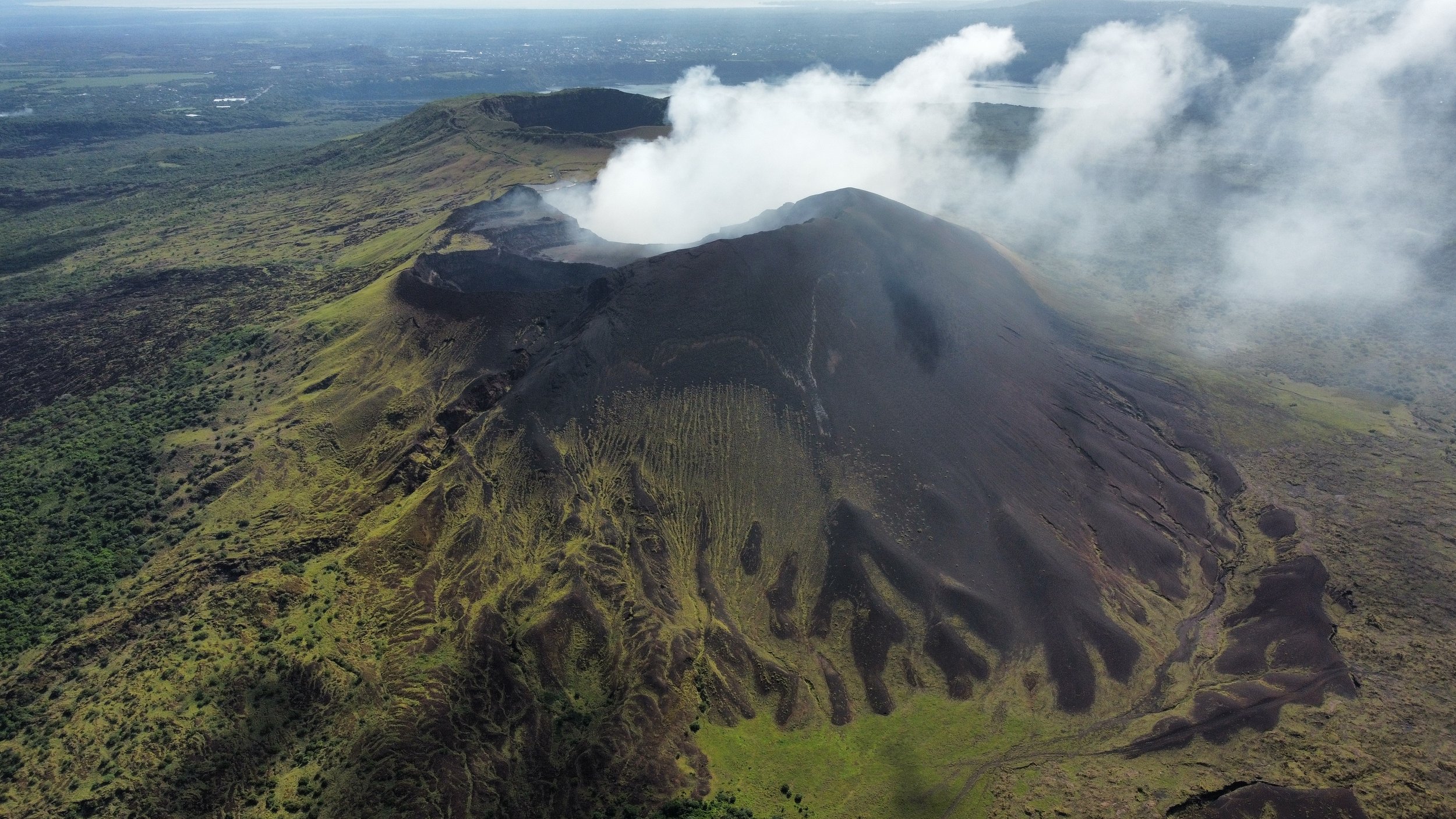
Chronicles of Volcan Masaya
Introduction
When the Spanish conquistadors first entered, fighting through the Chorotega provinces of Masaya and Nindirí, the volcano was in a state of intense activity. A lake of molten lava burned at the bottom of the large crater, and the tribal chiefs of the neighboring towns interpreted this phenomenon as a sign of the sorceress goddess's displeasure, to whom they often turned for consultation within the cavern. On that occasion, according to the version of the indigenous people, the oracle suspended her predictions until the natives expelled the invaders.
As for the Spaniards, they considered the volcanic activity as evidence that the crater was 'the Mouth of Hell,' the name with which they originally baptized the volcano. The Mercedarian friar Francisco de Bobadilla climbed to the summit, where he placed a cross to drive out the devil. Others believed that the glowing material at the bottom was sulfur or molten metal, including gold. This last idea tempted the Dominican Blas del Castillo to organize a daring descent to the bottom in search of the prized metal.
The mystery of the crater could not go unnoticed by the diligent Chronicler of the Indies, Gonzalo Fernández de Oviedo, who, before leaving Nicaragua, decided to climb the volcano and take a look at the gigantic and mysterious abyss at its summit. To do so, he was guided by the tribal chief of Nindirí, who shared with him the indigenous superstitions surrounding the volcano.
Astonished by the phenomenon he observed below and in awe of the Dominican’s boldness—who, nine years after his visit, had himself lowered by ropes to the spot where the glowing molten material lay—Oviedo devoted several chapters of Book XLII to share his impressions of the volcano and to recount the friar's daring descent to the crater's depths.
The Masaya volcano and the attempts to find gold within it captivated several chroniclers who either visited Nicaragua in the 17th century or heard of it, with their accounts and opinions presented later. However, none dedicated as much attention or as many pages to it as Oviedo. His description and drawing are, in fact, the earliest recorded testimonies of an active volcano in the New World, which turned out to be the only one on the continent—and one of the few in the world—with recurrent lava lakes at its bottom for extended periods.
Jaime Incer, Cronicas de Viajeros Nicaragua Vol. I, 1990